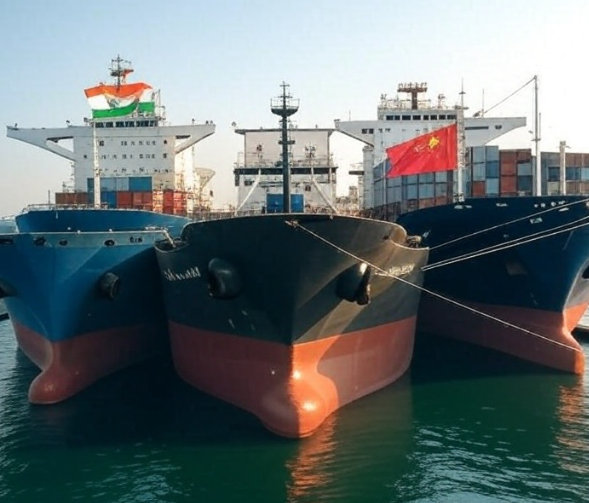
Once hailed as the factory of the world, China is now trapped in a deepening economic crisis. There was a time when China’s glowing factories and massive export machinery could shake the global markets. But now, the speed of the Chinese growth engine has slowed dramatically. This shift presents a historic opportunity for India to step forward and emerge as a global economic leader.
To understand this moment better, we must first recognize the fundamental difference between the economies of China and India. China operates on an export-led model, meaning most of what it produces is not consumed domestically but shipped abroad. On the other hand, India runs a consumption-driven economy. What we manufacture is largely consumed within the country. This distinction plays a crucial role during global economic slowdowns. For example, if a recession hits Western nations like the US or Europe, China’s economy takes a direct hit. India, in contrast, remains relatively unaffected due to the strength of its domestic market.
Now let’s come to the most recent developments. As per a Reuters report dated June 9, 2025, China’s exports in May grew by only 4.8%. In comparison, export growth in April 2025 stood at 8.1%. This marks the lowest growth in three months. The most startling fact is that China’s exports to the United States have fallen by a massive 35%—the sharpest drop since 2020. And this is happening even though the US has rolled back some tariffs on Chinese goods. So the decline isn't due to external trade barriers, but internal economic weakness within China itself.
Another major concern for China is deflation. While the term might sound positive at first—suggesting falling prices—it is actually dangerous for an economy. In China, the Producer Price Index (PPI) is currently at -3%, and the Consumer Price Index (CPI) is hovering close to 0%. This means neither consumers are spending, nor is industry producing at full capacity. When demand vanishes, investments dry up, and that’s exactly what is unfolding in China right now.
Despite the Xi Jinping government introducing a massive 500 billion yuan stimulus package last year, there has been little movement in the market. One of the reasons is overcapacity. China has produced more than it can consume or export—from pens to electronics. Think about it: if the demand is for 50 units and you produce 100, where does the excess go? Earlier, China could sell this surplus in Western markets. But now, with both the US and Europe distancing themselves from Chinese imports, warehouses in China are full of unsold goods.
Meanwhile, India is charting a very different trajectory. In the financial year 2024–25, India exported goods worth 821 billion dollars, and the target is to reach 1 trillion dollars by 2030. Global giants like Apple are now shifting their entire iPhone manufacturing to India. Phones sold in the US in the coming years will proudly carry the "Made in India" label. This signals that India is not only stepping into China’s shoes in manufacturing but also becoming a top export destination.
India’s biggest strength lies in its stable inflation, currently around 4%. Demand is healthy, production is steady, and with the Reserve Bank of India keeping the policy rate at 5.5%, growth is receiving an added push. The combined efforts of the Indian government and RBI are creating a supportive environment for economic expansion.
A global trend that’s boosting India further is the "China Plus One" strategy. Multinational companies are now looking to diversify their supply chains by investing in countries other than China. India has emerged as the most reliable alternative. All India needs to do now is focus on strengthening ease of doing business and expanding its manufacturing infrastructure.
China’s economic crisis is not a threat to India, but a historic opportunity. The period from 2025 to 2030 could prove to be decisive for India. If the government, industry, and citizens work together, there is no reason why India cannot become a developed economy.
Disclaimer:
This article is for informational purposes only and does not constitute financial advice or a recommendation to invest. Readers should conduct their own research or consult a financial advisor before making investment decisions.




